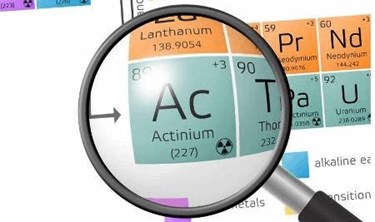Unravelling The Atomic And Nuclear Structure Of The Heaviest Elements

Little is known about the heaviest, radioactive elements in Mendeleev’s table. But an extremely sensitive technique involving laser light and gas jets makes it possible for the very first time to gain insight into their atomic and nuclear structure. An international team led by scientists from the Institute for Nuclear and Radiation Physics at KU Leuven report these findings in Nature Communications.
In 2016 scientists added four more elements to Mendeleev’s periodic table. These heavy elements are not found on Earth and can only be generated using powerful particle accelerators. “The elements are usually generated in minuscule quantities, sometimes just a couple of atoms per year. These atoms are also radioactive, so their decay is quick: sometimes they only exist for a fraction of a second. That is why scientific knowledge of these elements is very limited,” say nuclear physicists Mark Huyse and Piet Van Duppen from the KU Leuven Institute for Nuclear and Radiation Physics.
The KU Leuven researchers are now hoping to change that through a new use of the laser ionization technique. “We produced actinium (Ac), the name-giving element of the heavy actinides, in a series of experiments using the particle accelerator at Louvain-la-Neuve. The quickly decaying atoms of this element were captured in a gas chamber filled with argon, sucked into a supersonic jet, and spotlighted with laser beams. By doing so we bring the outer electron in a different orbit. A second laser beam then shoots the electron away. This ionizes the atom, meaning that it becomes positively charged and is now easy to manipulate and detect. The colour of the laser light is like a fingerprint of the atomic structure of the element and the structure of its nucleus.”
In itself, laser ionization is a well-known technique but its use in a supersonic jet is new and very suitable for the heavy, radioactive elements: “By ionizing the atom we significantly increase the sensitivity of the technique. The production of a few atoms per second is already enough for measurements during the experiments. This technology increases the sensitivity, accuracy, and speed of the laser ionization by at least ten times. This marks an entirely new era for research on the heaviest elements and makes it possible to test and correct the theoretical models in nuclear physics. Our method will be used in the new particle accelerator of GANIL, which is currently under construction in France.”
Additional material is available on the website of the Institute for Nuclear and Radiation Physics (top right). This study was funded by the European Research Council, Research Foundation Flanders (FWO), the KU Leuven Special Research Fund (BOF), and the Belgian Federal Science Policy Office (BELSPO). It's a collaboration between KU Leuven, CRC Louvain-la-Neuve, and research teams from France, Germany, the United Kingdom, and Finland. Click here to read the study in Nature Communications (doi 10.1038/NCOMMS14520) (http://www.nature.com/articles/ncomms14520).
Source: KU Leuven
